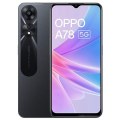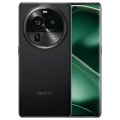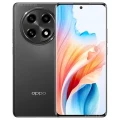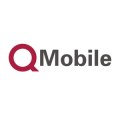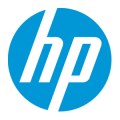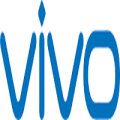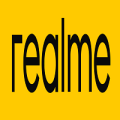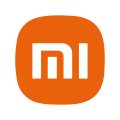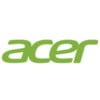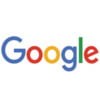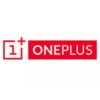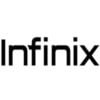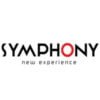Oppo F3
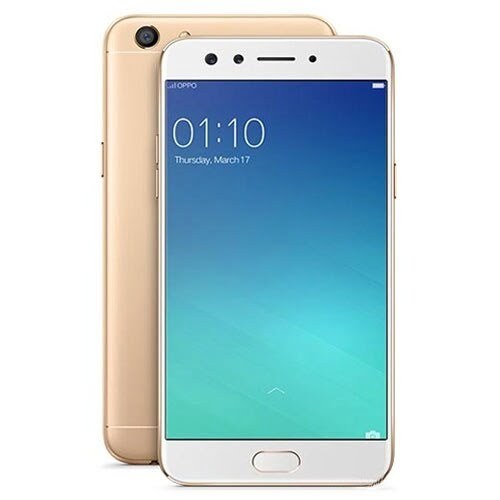


Oppo F3 Price in Bangladesh
The Oppo F3 Price in Bangladesh is BDT 24,990. This smartphone features a 5.5-inch IPS LCD display and is powered by an Octa-core 1.5 GHz MediaTek MT6750T processor. It comes with 4GB of RAM and 64GB of internal storage, which can be expanded up to 256GB with external storage. The Oppo F3 sports a single 13 MP rear camera and a dual front camera setup with 16 MP and 8 MP sensors for selfies. It is powered by a 3200mAh Li-Ion battery. The Oppo F3 Price in Bangladesh reflects its stylish design and decent performance, making it a solid mid-range option.
Specifications
General
| Model | Oppo F3 |
| Announced | 2017, May |
| Released | 2017, May |
| Status | Available |
Design
| Dimensions | 153.3 x 75.2 x 7.3 mm (6.04 x 2.96 x 0.29 in) |
| Weight | 153 g (5.40 oz) |
| Colors |
Gold, Rose Gold |
Network
| Technology | GSM / HSPA / LTE |
| 2G Network |
GSM 850 / 900 / 1800 / 1900 - SIM 1 & SIM 2 |
| 3G Network |
HSDPA 850 / 900 / 2100 |
| 4G Network |
LTE band 1(2100), 3(1800), 5(850), 7(2600), 8(900), 38(2600), 39(1900), 40(2300), 41(2500) |
| GPRS <strong>GPRS</strong> (General Packet Radio Service) is a packet oriented mobile data service on the 2G and 3G cellular communication system's global system for mobile communications (GSM), Generally, GPRS is used for the purpose of wireless data transfer, such as sharing pictures and videos or browsing the Internet via a mobile phone connection. | |
| EDGE <strong>EDGE</strong> (Enhanced Data GSM Environment) is a wireless network technology generally considered the next step in the 2G network offers data transfer rates up to four times faster than ordinary GSM networks, Generally, EDGE is used for the purpose of wireless data transfer, such as sharing pictures and videos or browsing the Internet via a mobile phone connection. | |
| Speed | HSPA 42.2/5.76 Mbps, LTE Cat4 150/50 Mbps |
Display
| Display Type <strong>Display Technology => </strong> A number of display technologies and types used in mobile phones => TFT (Thin Film Transistor), IPS (In-Place Switching), OLED (Organic Light Emitting Diode), AMOLED (Active-Matrix Organic Light-Emitting Diode), Super AMOLED (an even advanced version of AMOLED), Resistive Touchscreen (Resistive touchscreens contain two layer of conductive material with a very small gap between them which acts as a resistance), Capacitive Touchsceen (Capacitive touchscreen technology consists of a layer of glass coated with a transparent conductor) | IPS LCD capacitive touchscreen, 16M colors |
| Size | 5.5 inches, 83.4 cm2 (~72.3% screen-to-body ratio) |
| Resolution | 1080 x 1920 pixels, 16:9 ratio (~401 ppi density) |
| Features |
Gorilla Glass 5 ColorOS 3.0 |
Camera
Main camera
| Camera Setup | Single |
| Primary <strong>Camera</strong> is able to capture photographs and usually videos, The most important characteristics of a camera are the resolution (measured in megapixels), lens focus type (fixed or automatic), higher megapixel cameras are known to capture higher quality photos, but not always a good measurement of the photos quality. |
13 MP, f/2.2, 1/3&quot;, 1.12µm, PDAF |
| Features |
LED flash, HDR, panorama |
| Video | 1080p@30fps |
Selfie camera
| Camera Setup | Dual |
| Primary <strong>Camera</strong> is able to capture photographs and usually videos, The most important characteristics of a camera are the resolution (measured in megapixels), lens focus type (fixed or automatic), higher megapixel cameras are known to capture higher quality photos, but not always a good measurement of the photos quality. |
16 MP, f/2.0, 1/3.1&quot; 8 MP, f/2.4 |
Hardware
| Chipset <strong>Chipset</strong> is a group of integrated circuits designed to perform one or a more dedicated functions, often with real time computing constraints, Popular smartphones are equipped with more advanced embedded chipsets that can do many different tasks depending on their programming. | Mediatek MT6750T (28 nm) |
| CPU <strong>CPU</strong> (Central Processing Unit) mostly known as processors, CPU processes instructions in order to carry out certain functions that make your device operate properly. Processors are often described as the brain of computers, smartphones and tablets, Smartphones and tablets rely on processors to carry out their every task, Processors are an incredibly important factor in selecting any type of computing device, including your smartphone. | Octa-core (4x1.5 GHz Cortex-A53 & 4x1.0 GHz Cortex-A53) |
| GPU <strong>GPU</strong> (Graphics Processing Unit) is a single-chip processor designed to rapidly manipulate and alter memory to accelerate the creation of images in a frame buffer intended for output to a display, This includes things such as lighting effects, object transformations, and 3D motion. | Mali-T860MP2 |
| RAM (Memory) <strong>RAM</strong> (Random Access Memory) is a type of computer memory that can be accessed randomly, any byte of memory can be accessed without touching the preceding bytes that allows information to be stored and accessed quickly from random locations. RAM is the most common type of memory found in computer systems, smartphones, tablets and other electronic devices. | 4 GB RAM |
| Internal Storage <strong>Internal Storage</strong> is a data storage space (flash memory) mostly used in smartphones, tablets and other electronic devices where operating system, apps, music, photos, videos, files and other user data Is stored. | 64 GB |
| Sensors <strong>Sensors</strong> are electronic components that detects and responds to some type of input from the physical environment. The specific input could be light, heat, motion, moisture, pressure and location, The output is generally a signal that is converted to use in computing systems, a location sensor, such as a GPS receiver is able to detect current location of your electronic device. |
Fingerprint -(front-mounted), accelerometer, proximity, compass |
Connectivity
| Bluetooth <strong>Bluetooth</strong> is a wireless communications technology for exchanging data between mobile phones, headsets, computers and other network devices over short distances without wires, Bluetooth technology was primarily designed to support simple wireless networking of personal consumer devices. | 4.1, A2DP, LE |
| Infrared <strong>Infrared</strong> connectivity is an old wireless technology used to connect two electronic devices. It uses a beam of infrared light to transmit information and so requires direct line of sight and operates only at close range. | |
| USB | microUSB 2.0, USB On-The-Go |
| GPS <strong>GPS</strong> The Global Positioning System is a satellite-based radio navigation system, GPS permits users to determine their position, velocity and the time 24 hours a day, in all weather, anywhere in the world, In order to locate your position, your device or GPS receiver must have a clear view of the sky. | Yes, with A-GPS |
| NFC <strong>NFC</strong> (Near field communication) is a set of standards for smartphones and similar devices to establish peer-to-peer radio communications with each other by touching them together or bringing them into proximity, usually no more than a few inches. |
Battery
| Battery Type <strong>Battery Type => </strong> Cell phones run on various kinds of batteries depending on the manufacturer, phone size or shape and features. There are basically four types of cell phone batteries => Lithium Polymer, Lithium Ion, Nickel Metal Hydride and Nickel Cadmium. | Non-Removable Li-Po |
| Capacity <strong>Battery Capacity</strong> is a measure (typically in Amp-hr) of the charge stored by the battery, and is determined by the mass of active material contained in the battery. The battery capacity represents the maximum amount of energy that can be extracted from the battery under certain conditions. | 3200 mAh battery |
| Charging Charging | Fast battery charging (VOOC Flash Charge) |
Oppo F3 Review: Is This the Ultimate Selfie Smartphone?
Introduction
In a world where selfies dominate social media feeds, the Oppo F3 has quickly established itself as a contender in the smartphone market. This device promises to deliver exceptional camera performance, robust build quality, and an overall user-friendly experience. For tech enthusiasts, smartphone users, and loyal Oppo fans, the F3 offers a blend of cutting-edge technology and stylish design. In this review, we’ll dissect the Oppo F3’s features to determine if it truly lives up to its hype.
Design and Build Quality
The first impression is often the most lasting, and Oppo understands this well. The Oppo F3 sports a sleek, modern design that exudes elegance. Featuring a unibody metal construction, the phone feels sturdy and premium in hand. The attention to detail is evident, from the finely polished edges to the seamless integration of components.
A standout feature is the 5.5-inch Full HD display. The screen is vibrant and sharp, making it perfect for multimedia consumption. The Gorilla Glass 5 protection ensures durability, minimizing the risk of scratches and accidental drops. Furthermore, the slim bezels contribute to a more immersive viewing experience, a detail tech enthusiasts will appreciate.
Oppo has also placed the fingerprint sensor on the front, embedded in the home button. This positioning allows for quick and easy unlocking while maintaining a clean rear design. Overall, the Oppo F3’s design and build quality are commendable, offering both functionality and aesthetics.
Camera Performance
One of the Oppo F3’s main selling points is its camera setup, particularly its dual front cameras designed for selfies. The primary front camera boasts a 16MP sensor with an f/2.0 aperture, capturing high-resolution images with impressive clarity. The secondary front camera features an 8MP sensor with a wider 120-degree field of view, ideal for group selfies.
Sample images reveal excellent detail, accurate colors, and good exposure levels. The bokeh effect, which blurs the background to highlight the subject, is executed well, giving selfies a professional touch. Low-light performance is also noteworthy, thanks to the screen flash feature that illuminates faces evenly.
The rear camera isn’t left behind either. With a 13MP sensor and phase detection autofocus (PDAF), it captures sharp and vibrant photos. The camera app offers various modes, including Ultra-HD, Panorama, and Expert mode, allowing users to tweak settings for their perfect shot. Overall, the Oppo F3 excels in camera performance, making it a top choice for photography enthusiasts.
Performance and Battery Life
Under the hood, the Oppo F3 is powered by a MediaTek MT6750T octa-core processor paired with 4GB of RAM. This combination ensures smooth multitasking and efficient performance for everyday tasks. Apps open quickly, and navigating through menus is swift, making for a pleasant user experience.
Gaming performance is satisfactory, with titles like Asphalt 8 and PUBG running reasonably well on medium settings. While it’s not the most powerful processor on the market, it holds its own for casual gaming and multimedia consumption.
Battery life is another strong suit of the Oppo F3. The device houses a 3200mAh battery, which comfortably lasts a full day on moderate use. This includes activities like browsing, social media, streaming videos, and light gaming. The power-efficient processor, coupled with Oppo’s software optimizations, ensures you won’t be reaching for the charger before the day ends.
User Experience and Interface
The Oppo F3 runs on ColorOS 3.0, based on Android 6.0 Marshmallow. While not the latest iteration of Android, ColorOS brings a unique flair to the user experience. The interface is clean and intuitive, with a focus on ease of use.
Customization options are plentiful. Users can change themes, icons, and even transition effects to suit their preferences. The smart assistant feature provides quick access to frequently used apps and contacts, streamlining daily tasks.
Unique functionalities include the split-screen mode, which allows for multitasking by running two apps simultaneously. The gesture controls are also handy, offering shortcuts for various actions like taking screenshots or launching the camera. Overall, the Oppo F3’s user interface enhances the overall experience, making it user-friendly and efficient.
Price and Value Proposition
Pricing is often a decisive factor for many smartphone buyers. The Oppo F3 is positioned in the mid-range segment, making it accessible to a broad audience. When compared to similar smartphones, it holds its ground, offering a compelling mix of features and performance.
Competitors like the Vivo V5s and Samsung Galaxy J7 Prime offer similar specs but fall short in certain areas. The Oppo F3’s standout selfie cameras and premium design give it an edge. Additionally, subscribers to Oppo’s services can enjoy exclusive deals and discounts, adding to the overall value proposition.
Given its strong performance in key areas like design, camera quality, and battery life, the Oppo F3 offers excellent value for money. It’s a solid investment for those seeking a reliable and feature-rich smartphone without breaking the bank.
Conclusion
In summary, the Oppo F3 impresses across the board. Its sleek design, outstanding camera capabilities, reliable performance, and user-friendly interface make it a worthy contender in the crowded smartphone market. For tech enthusiasts, smartphone users, and Oppo fans, this device delivers on its promises.
Whether you’re a selfie aficionado, a casual gamer, or someone who values a well-rounded smartphone experience, the Oppo F3 is worth considering. We encourage you to share your thoughts or experiences with the Oppo F3 in the comments below. If you’re intrigued by its features, why not visit our store and see it for yourself?
By integrating relevant keywords like “Oppo F3 review,” “selfie smartphone,” and “mid-range smartphone,” this blog post aims to enhance search engine visibility. Feel free to explore more reviews and guides on our website to stay updated with the latest in smartphone technology.
